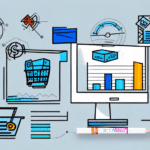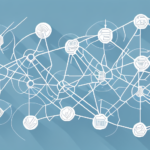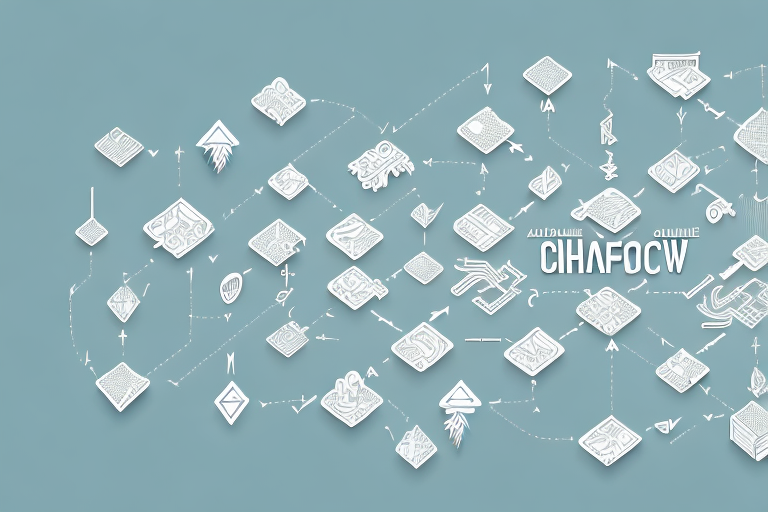Understanding Average Resolution Time (ART) in E-Commerce Operations
In today's fast-paced digital marketplace, where customers expect swift and efficient service, the ability to resolve issues promptly is essential for e-commerce success. One of the critical metrics that e-commerce businesses rely on to gauge their customer support effectiveness is Average Resolution Time (ART).
What is Average Resolution Time (ART)?
ART measures the average time taken by support representatives to resolve customer issues from the moment a support ticket is opened until it is closed. This metric provides valuable insights into the efficiency of customer support teams and the overall customer experience. According to [Zendesk](https://www.zendesk.com/resources/average-resolution-time/), a lower ART typically correlates with higher customer satisfaction, as issues are addressed promptly and effectively.
Importance of ART in E-Commerce
ART is not just a number; it's a reflection of a company's commitment to customer service. A lower ART can lead to increased customer satisfaction, higher retention rates, and positive word-of-mouth referrals. Conversely, a high ART may indicate inefficiencies within the support system, potentially leading to frustrated customers and lost sales.
Calculating Average Resolution Time in E-Commerce
Accurately calculating ART is fundamental to understanding and improving customer support performance. Here's how e-commerce businesses can calculate ART:
ART Calculation Formula
The formula to calculate ART is straightforward:
ART = Total Time Taken to Resolve All Tickets / Number of Tickets ResolvedFor example, if your support team resolves three tickets in 30, 20, and 60 minutes respectively, the total resolution time is 110 minutes. Dividing this by the number of tickets (3) gives an ART of approximately 36.66 minutes.
Factors Influencing ART
- Ticket Complexity: More complex issues naturally take longer to resolve.
- Resource Availability: Adequate staffing and training can significantly impact ART.
- Support Tools: Efficient ticketing systems and automation tools can streamline the resolution process.
Monitoring these factors can help businesses identify areas for improvement and implement strategies to reduce ART.
ART's Role in Enhancing Customer Satisfaction and Loyalty
ART plays a pivotal role in shaping customer perceptions and experiences. Here's how:
Improving Customer Satisfaction
Quick resolution of issues enhances the overall customer experience. According to a study by [HubSpot](https://www.hubspot.com/customer-service), 90% of customers rate an immediate resolution of their issues as important or very important. Lower ART contributes directly to meeting this expectation, leading to higher customer satisfaction scores.
Fostering Customer Loyalty and Retention
Customers are more likely to remain loyal to brands that consistently provide timely and effective support. Reduced ART not only resolves current issues but also builds trust, encouraging repeat business and long-term loyalty. This is supported by research from [Harvard Business Review](https://hbr.org/2014/10/the-value-of-customer-experience-quantified), which shows that increasing customer retention rates by just 5% can boost profits by 25% to 95%.
Key Metrics to Monitor Alongside ART
While ART is a crucial metric, it's essential to track it alongside other supportive metrics to gain a comprehensive view of customer support performance:
- First Response Time (FRT): The time taken to provide the initial response to a customer's inquiry.
- Resolution Rate: The percentage of issues resolved on the first contact.
- Customer Satisfaction Score (CSAT): A measure of customer satisfaction based on feedback and surveys.
- Average Handling Time (AHT): The average duration a support agent spends on handling a customer issue.
Balancing these metrics ensures that the focus remains not only on speed but also on the quality of support provided.
Best Practices for Reducing ART in E-Commerce Operations
Implementing effective strategies to lower ART can lead to significant improvements in customer experience and operational efficiency:
Invest in Advanced Support Infrastructure
Utilizing modern ticketing systems and customer relationship management (CRM) tools can streamline the support process. These tools help in prioritizing tickets, automating responses for common queries, and ensuring that issues are assigned to the right agents promptly.
Leverage Artificial Intelligence and Automation
AI-powered chatbots and virtual assistants can handle a large volume of routine inquiries, freeing up human agents to focus on more complex issues. According to a report by [Gartner](https://www.gartner.com/en/newsroom/press-releases/2021-09-20-gartner-says-global-ai-software-revenue-to-grow-21-percent-in-2021), the integration of AI in customer support can reduce ART by up to 30%.
Enhance Agent Training and Resources
Providing comprehensive training and up-to-date resources ensures that support agents are well-equipped to handle a variety of customer issues efficiently. Regular training sessions and access to knowledge bases can significantly reduce the time taken to resolve tickets.
Implement Self-Service Options
Offering a robust FAQ section, knowledge base, or video tutorials allows customers to find solutions independently, reducing the number of support tickets and thereby lowering ART. Self-service options also empower customers, enhancing their overall experience.
Tools and Technologies for Tracking and Analyzing ART
To effectively monitor and improve ART, e-commerce businesses can utilize a range of tools and technologies:
Customer Service Software
Platforms like [Zendesk](https://www.zendesk.com/) and [Freshdesk](https://freshdesk.com/) offer integrated dashboards that track ART and other key metrics in real-time, providing actionable insights into support performance.
Performance Dashboards
Customizable dashboards allow businesses to visualize ART trends, identify bottlenecks, and make data-driven decisions to optimize their support processes.
Social Media Monitoring Tools
Tools such as [Hootsuite](https://hootsuite.com/) and [Sprout Social](https://sproutsocial.com/) help in tracking customer sentiment and managing support requests that come through social media platforms, ensuring timely resolutions.
Customer Feedback Systems
Implementing feedback mechanisms like post-interaction surveys and Net Promoter Score (NPS) assessments can provide direct insights into customer satisfaction and areas needing improvement.
Case Studies: Successful Reduction of ART in Leading E-Commerce Companies
Several top e-commerce companies have effectively reduced their ART through strategic initiatives:
Amazon
Amazon employs advanced AI systems to predict and address potential customer issues proactively. By analyzing customer data and behavior patterns, Amazon's support system can resolve issues even before they are formally raised, significantly reducing ART.
Zappos
Zappos has built a customer-centric culture where support agents are empowered to resolve issues without stringent time constraints. This approach ensures high-quality resolutions, fostering customer loyalty while maintaining efficient ART.
Alibaba
Alibaba utilizes a combination of chatbots and human agents to handle customer inquiries. Their integrated approach allows for rapid responses to common queries through automation, while more complex issues are seamlessly escalated to specialized support teams, ensuring a balanced and reduced ART.
Benefits of Using ART as a Performance Indicator
Focusing on ART offers numerous advantages for e-commerce businesses:
- Enhanced Customer Experience: Faster resolutions lead to happier customers and positive reviews.
- Increased Operational Efficiency: Streamlined support processes reduce the workload on support teams.
- Cost Savings: Efficient resolution of issues can lower support costs by minimizing the need for extensive follow-ups.
- Data-Driven Improvements: Monitoring ART provides valuable data that can inform strategic decisions and continuous improvement efforts.
Future Trends and Predictions for Measuring Resolution Times in E-Commerce
The landscape of customer support is continually evolving, with emerging trends shaping how ART is measured and managed:
Integration of AI and Machine Learning
Artificial Intelligence (AI) and Machine Learning (ML) are set to play a significant role in predicting and resolving customer issues more efficiently. These technologies can analyze vast amounts of data to identify patterns, anticipate common problems, and suggest optimal solutions, thereby further reducing ART.
Omnichannel Support Strategies
Customers interact with brands across multiple channels, including email, social media, live chat, and phone. Implementing an omnichannel support strategy ensures consistency and efficiency in resolving issues, regardless of the platform, thereby optimizing ART.
Proactive Customer Support
Proactive support involves addressing potential issues before they escalate. By monitoring customer behavior and system performance, businesses can identify and resolve problems preemptively, minimizing the need for customer-initiated support requests and reducing overall ART.
Enhanced Personalization
Personalized support experiences leverage customer data to provide tailored solutions more quickly. By understanding individual customer histories and preferences, support agents can resolve issues more efficiently, leading to lower ART and improved customer satisfaction.
In conclusion, Average Resolution Time (ART) remains a vital metric for e-commerce businesses aiming to deliver exceptional customer service. By understanding, measuring, and strategically managing ART, companies can enhance customer satisfaction, foster loyalty, and drive sustained business growth.




















